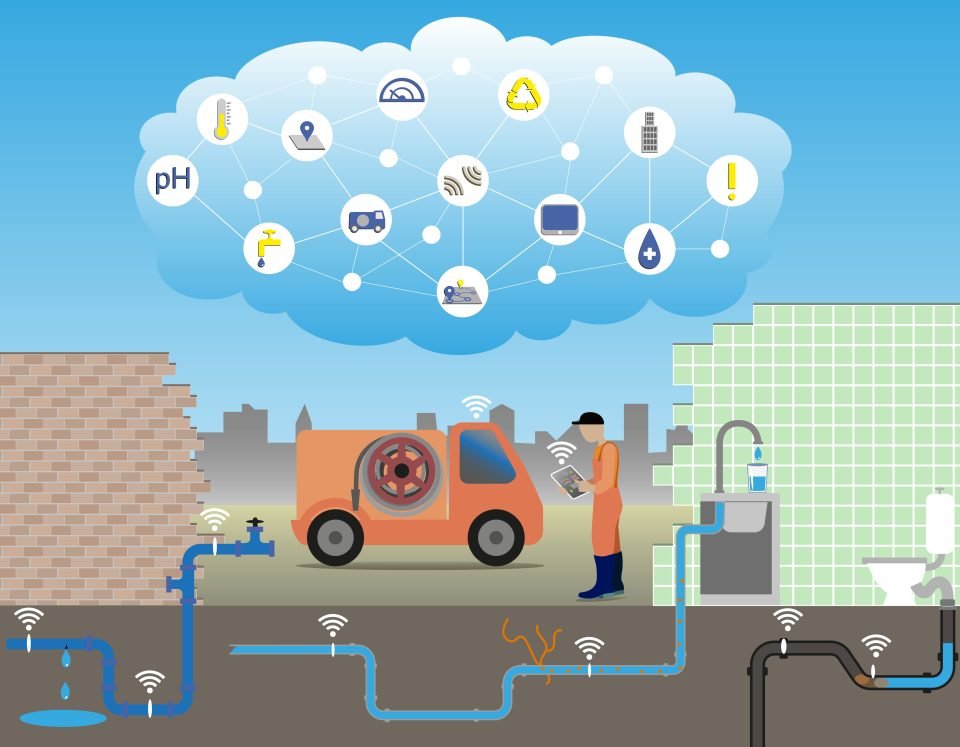Water scarcity is a concern that is rising with each passing day. Water is an irreplaceable resource for every being on the planet. Unfortunately, such a critical resource has been abused through time. As late as it might be, technology has to focus on water resources & their quality. Especially in these testing times, the quality of water is a sensitive matter. Smart cities need to prioritize water quality monitoring. It is important to observe the presence of water pollutants and toxins to quarantine them and to stop them from infecting the clean water. It goes without mentioning that water is one of the most precious resources on the planet. Therefore, smart cities must put their best efforts towards water quality monitoring.
Importance Of Water Quality Monitoring:
Availability of drinking water sources is a reflection of water quality for any particular area, city, or country. For instance, a high amount of US citizens get their tap water straight from the community water systems. As such, it reflects the availability of safe water supplies. However, this is not the case with every part of the world. Water contamination is infecting clean water at an alarming rate. For instance, as per UNESCO, around 80% of wastewater is dissolving back in the world without purification or treatment. Such pollution into rivers, oceans, and lakes can transmit numerous diseases. As per WHO, approximately 485,000 diarrhoeal deaths take place each year because of contaminated drinking water.
Several sources of contamination, including industrialization, the release of toxins, natural minerals, and residential practices. Some common sources include:
- Bad residential practices (releasing toxins, pesticides, fertilizers, etc.)
- Failure of wastewater management & containment
- Sewage system malfunctioning or unavailability
- Exposure to chemicals & minerals (uranium, radon, arsenic, etc.)
- Industrial & manufacturing practices (release of industrial wastes)
These sources are known and as such it is possible to keep an eye of them with the help of IoT. Therefore, smartcities can implement water quality monitoring in these areas to help overcome the challenge.
Implementation Of Water Quality Measurement Systems
One can monitor the quality of water with the help of several properties. Monitoring those characteristics over time can help identify any changes in them. For instance, something is affecting water quality in a particular region if the pH of water changes. Therefore, routine monitoring of different parameters can be insightful for water quality measurement into smart cities. Here are some of the properties that are important to monitor:
- Water Acidity/pH:
Monitoring pH is measuring the presence of hydrogen ions in water. Measurement of H+ in water can help identify if the water is acidic, basic, or neutral.
- Turbidity:
Turbidity is the property of water that makes it opaque or cloudy. Therefore, measuring water transparency can help identify the presence of matters such as clay, microorganisms, slit, etc.
- Dissolved Oxygen (O2)
Ten molecules of Oxygen are needed to be dissolved into million molecules of water. It allows fish, microscopic organisms, and other aquatic organisms to survive. Moreover, lower levels of dissolved O2 reflect the presence of bacteria and algae.
- Electrical Conductivity:
Amounts of pollutants and solids such as salt can affect the conductivity of water. Therefore, electrical conductivity can help identify the purity of water.
- Hardness:
The hardness of water can represent the presence of Calcium and Magnesium in the water. It is important to verify the ideal water hardness as per the standards.
- Suspended Solids:
Suspended solids are the measure of solids circulating in water, such as soil. Flowing water can carry more suspended solids compared to calm water.
- Temperature:
Temperature plays an important role in underwater lives. In addition to that, the temperature can also affect the level of oxygen in the water. Indirectly, the temperature can contribute to organisms’ ability to resist pollutants.
In Conclusion
Water quality monitoring is a crucial development for smart cities. It is high time now to not only monitor but improve water quality. Improving water quality will take place with absolute control over sources of pollution. At least, smart cities can control water flow with IoT to ensure polluted water does not affect clean water. Therefore, smart cities can implement strict preventive and corrective measures for water pollution as well as water waste. Water quality monitoring can help nurture the environment with significant implementation across the globe in the near future.
Develop great IoT solutions for intelligent Smart Cities with high quality software, devices and infrastructures. Contact us!


